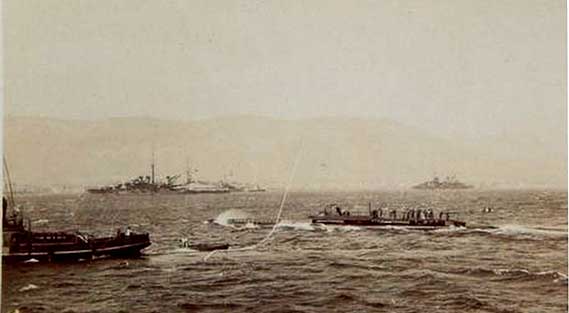1923 Treaty of Lausanne
After an unsuccessful military campaign against the Greeks, Turkey concluded a peace treaty with the allies. Under the terms of the agreement Turkey gave up all claim to non-Turkish territories lost in the course of World War I. It recovered however, Eastern Thrace. In the Agean it recieved Imbros and Tenedos, but the rest of the islands went to Greece. Turkey paid no reparations. The Straits of Dardenelles were demilatarized and open to all ships in time of peace and all neutral ships in a time of war.
.
Following the end of World War I, the victorious Allied Powers sought to dismantle the defeated Ottoman Empire, which had sided with the Central Powers. The Treaty of Sèvres, signed in 1920, proposed the division of the Ottoman territories among the Allies, including the creation of an independent Armenian state and granting autonomy to the Kurds. It also granted significant territorial concessions to Greece, which aimed to expand its influence in Asia Minor.
The harsh terms of the Treaty of Sèvres sparked nationalist sentiments among the Turkish people, who felt humiliated and unfairly treated. Under the leadership of Mustafa Kemal Atatürk, a decorated Ottoman military officer, the Turkish National Movement emerged to resist the implementation of the treaty. This resistance led to the Turkish War of Independence, which lasted from 1919 to 1922.
The Treaty of Lausanne
The Turkish National Movement successfully repelled Greek and Armenian forces during the War of Independence, and the Allies soon realized that the Treaty of Sèvres was unenforceable. As a result, they agreed to negotiate a new treaty with the Turkish National Movement, which culminated in the Treaty of Lausanne.
The treaty was signed on July 24, 1923, by representatives of the British Empire, France, Italy, Japan, Greece, Romania, the Serb-Croat-Slovene State (later known as Yugoslavia), and the Republic of Turkey. The negotiations took place in Lausanne, Switzerland, under the supervision of the League of Nations, the precursor to the United Nations.
Key Provisions
The Treaty of Lausanne defined the borders of the Republic of Turkey, recognizing its sovereignty over a large portion of the former Ottoman Empire. Some of the key provisions of the treaty include:
-
Recognition of the Republic of Turkey's sovereignty and the renunciation of all claims to the former territories of the Ottoman Empire.
-
Establishment of the current borders of Turkey, including the transfer of Western Thrace to Greece and the return of the Aegean islands to Greece, except for Imbros and Tenedos, which remained under Turkish control.
-
The demilitarization of the Turkish Straits (the Bosporus and the Dardanelles) and the creation of an international commission to regulate maritime traffic.
-
The exchange of Greek and Turkish populations, involving the compulsory resettlement of approximately 1.5 million Greek Orthodox Christians from Turkey to Greece and about 500,000 Muslims from Greece to Turkey.
-
Economic provisions aimed at the restoration of Turkey's financial stability, including the cancellation of the Ottoman public debt and the distribution of assets among the Allied Powers.
-
The abolition of the capitulations, which were special privileges granted to foreign nationals in the Ottoman Empire, thus ensuring equal treatment for all foreigners in Turkey.
 >
>